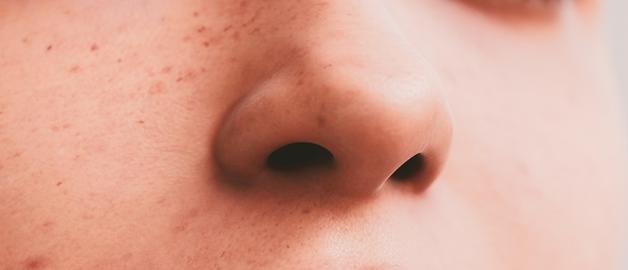Feeling unsettled by your own brown or grey-brown patches surfacing out of nowhere? Wondering if those facial marks are just a cosmetic issue or if they could mean something more for you, your partner, or even your child? When melasma appears, doubts swirl—questions about causes, safe remedies, and, yes, the familiar emotional weight of visible change in family photos or daily outings. Melasma, with its unpredictable timing and stubborn persistence, often sets parents on a quest for clarity and reassurance. What exactly is this pigmentary disorder, why does it target specific age groups (and more often women), and how do you gently shield your family from its hold—especially when sun, hormones, and even stress seem to play along? Answers don’t always come easy. Yet knowledge, both medical and practical, opens new doors for confidence, self-care, and calm. Here, you’ll find expert-backed perspectives, helpful science, and actionable tips that empower you to tackle melasma with both empathy and certainty.
Melasma: How It Shows Up and Whom It Chooses
Melasma is an acquired pigmentary disorder—a medical way of saying your skin starts showing brown to grey-brown patches, often arranged in a symmetrical pattern, mainly on areas like the cheeks, forehead, upper lip, nose, and chin. Sometimes, patches can take on a bluish-grey tint if the pigment lies deeper under the surface. Notice that there’s no soreness, no itching, just pigment quietly settling in places most visible. This condition is particularly prominent among women of reproductive age, accounting for about 90% of diagnosed cases. Yet, it doesn’t entirely spare men or, in rare instances, children.
Clustering within families—yes, hereditary tendencies certainly play a role—the risk is higher if relatives have encountered similar facial markings. Does darker skin mean immunity? Not at all. In fact, those with medium to dark phototypes, especially from Asian, Middle Eastern, or African backgrounds, face increased risk. The chronic nature of melasma means it can stay for several months or even years, waxing and waning with the seasons, often darkening after summer and fading just a bit when sunlight retreats.
What Triggers Melasma? Medical Explanations and Everyday Factors
You may wonder: Why now? Melasma doesn’t pop up randomly. Instead, several factors intertwine—some entirely beyond your control, others you can adapt to:
- Genetic predisposition: A family history ticks up the risk.
- Sun exposure: Both ultraviolet rays and visible light can stimulate melanocytes (cells responsible for producing melanin). When these cells become overactive, pigmentation increases, especially in sun-touched zones of the face.
- Hormonal changes: Pregnancy, hormonal contraceptives, and even thyroid disorders may push melanocytes into overdrive. The link is so clear that melasma is sometimes labelled the “mask of pregnancy”.
- Medications and skin products: Certain drugs or cosmetics rich in skin irritants or photosensitive ingredients (like some essential oils) may incite flare-ups or worsen persistent areas.
- Stress and oxidative factors: Yes, even emotional tension influences the skin—stress hormones can fuel pigment production.
- Physical friction or trauma: Overzealous scrubbing, frequent exfoliation, or repeated irritation disrupt skin balance, making it more vulnerable.
Diagnosis: How Do Doctors Identify Melasma?
A seasoned dermatologist will recognize melasma based on the symmetrical, well-demarcated patches showing up especially on the face. Sometimes, a Wood’s lamp examination (using ultraviolet light) helps determine how deep the pigment deposits run—epidermal lesions will glow more under this light, while deeper dermal types stay unaltered.
Tools like the Melasma Area and Severity Index (MASI) quantify severity and help monitor change over time. Occasionally, pigmentary disorders can look similar (such as post-inflammatory hyperpigmentation or lichen planus pigmentosus), and additional assessments ensure accurate identification. Once diagnosed, the right course of action—gentle yet precise—can be charted out.
Living With Melasma: The Emotional and Social Dimension
Perhaps the most challenging part for parents is not just the visible mark itself, but the questions it raises—both from others and within. Adults may feel uneasy under curious gazes or camera lenses. Children, ever observant, might ask innocent questions, prompting self-consciousness or frustration. Teens, in particular, might find melasma a tough companion during already vulnerable phases. The pigmentation shifts, flaring during summer and barely easing off, never entirely vanishing without effort. Emotionally, it’s draining.
Yet, emotional support can act as a buffer. Compassion from family, trusted friends, and, when needed, advice from healthcare professionals or support groups can soften the day-to-day impact. Non-comedogenic camouflage products—gentle, breathable makeup or tinted sunscreens—allow you to step out with newfound confidence, all while protecting the skin during the healing phase.
Melasma Prevention: Powerful Habits for Everyday Life
Fortify With Sun Protection
It all begins with sun defence. Daily application of a broad-spectrum sunscreen—look for mineral-based formulas with SPF 50+—is the gold-standard, especially on the face, neck, and even the upper chest. Reapplication every two hours remains vital, more so after swimming, sweating, or towelling off. Wide-brimmed hats, UV-blocking sunglasses, and seeking shade, particularly between 11 a.m. and 3 p.m., strengthen your protective barrier. Remember, UV rays penetrate clouds and glass, so consistent shielding matters even when skies appear dull.
Gentle Skincare Over Harsh Action
Forget abrasive scrubs and potent chemical actives, particularly during pregnancy. The skin barrier in melasma-prone individuals is more fragile; stick to soap-free cleansers, mild moisturisers, and avoid anything likely to irritate. Pat dry instead of rubbing after a wash. Retinoids, often popular for brightening, are best avoided when expecting. Instead, nurture with light hydration—inside and out.
Nourish From Within
Do diet and nutrient choices matter? While not a cure, consuming antioxidant-rich foods—think leafy greens, citrus, nuts, and brewer’s yeast—helps maintain skin resilience. Vitamin C and vitamin E, folic acid, and essential fatty acids all play gentle roles in supporting your complexion. Reducing ultra-processed snacks in favour of balanced, home-cooked meals further supports general skin robustness.
Treatment Options: Medical, Cosmetic, and Gentle Adjuncts
Post-Pregnancy Improvement and Patience
Melasma that appears during pregnancy often fades away, but the resolution is rarely instant. Some parents notice improvements within 6 to 12 months, especially if sun protection is maintained. Yet, more persistent patches may linger for years, requiring a thoughtful approach.
Dermatological Interventions (After Pregnancy)
- Depigmenting creams: Formulas containing hydroquinone, azelaic acid, tretinoin, or vitamin C have proved effective, though guidance from a specialist ensures both safety and results.
- Triple combination creams: Merging hydroquinone, a retinoid, and topical corticosteroids often speeds up recovery, though these powerful blends require dermatologist oversight.
- Azelaic acid: Appreciated for its safety, especially during pregnancy, and positive impact on sensitive skin.
- Chemical peels (AHAs/BHAs): Glycolic acid and salicylic acid peels must be carried out by trained professionals, as excessive treatment can worsen pigmentation.
- Laser or light therapies: For longstanding cases, advanced devices like Q-switched lasers may help, but darker skin types require careful, experienced handling to avoid rebound issues.
- Microneedling or oral agents: Emerging techniques such as microneedling improve absorption of topical agents, while oral therapies like tranexamic acid or antioxidant supplements suit moderate to severe cases—each step monitored for best results.
Gentle Home Support
Natural adjuncts like products featuring niacinamide, glabridin (licorice extract), or viniferine (from grapes) gently balance pigment production. Homemade yoghurt or honey masks provide mild brightening, though avoid essential oils or anything photo-reactive, especially during sensitive periods.
Camouflage: Cover Without Compromise
Makeup that contains iron oxides not only conceals pigment patches, but also adds another layer of light protection. Lightweight, easily removable and non-pore-clogging options remain best for regular use.
Managing Recurrence and Avoiding Pitfalls
Relapses are not rare: seasonal sunlight, hormones, or fresh skin sensitivity can all reignite faded patches. Prevention sits at the centre—strict sun avoidance, routine use of broad-spectrum sunscreen, and prompt attention to new changes. Overusing strong topical agents can backfire, sometimes causing irritation or even a temporary deepening of pigment. Sticking closely to your dermatologist’s recommendations and maintaining a gentle, adaptive daily routine pays rich dividends in the long run.
Special Populations: Pregnancy, Children, and Darker Phototypes
During pregnancy, sun protection is the universal prescription—medical interventions are generally postponed except for the safest options. In rare childhood cases, specialist guidance designs a gentle prevention or care plan, tailored to each skin’s needs. And for those with rich, darker skin, a softer approach avoids aggravating pigment shifts, prioritising barrier support over harsh solutions.
Latest Research and Innovations
Big leaps are occurring: topical agents like thiamidol, cysteamine, and advanced tranexamic acid show encouraging early results with fewer drawbacks. Novel antioxidants, oral agents (like Polypodium leucotomos extract), modern laser adaptations, and even personalised regimens tuned to each patient’s unique hormonal and genetic makeup are opening new pathways. Cosmetic science is busy formulating sunscreens that block broader light spectrums, making each family’s routine simpler, smarter, and—hopefully—more effective.
Key Takeaways
- Melasma is a widespread skin pigmentation condition, most visible on the face, generally harmless but often emotionally taxing for women of reproductive age and those with medium to dark complexions.
- Diligent, lifelong sun protection and commitment to gentle skincare routines far outweigh reactionary or aggressive treatments.
- A wholesome, antioxidant-rich diet bolsters the skin’s resistance but does not replace carefully prescribed topical or procedural therapies.
- Most pregnancy-related melasma regresses in time; persistent cases benefit from a tailored medical or cosmetic regimen devised by a specialist.
- Compassion, reliable health knowledge, and open discussion within families offer reassurance and renewal of confidence.
- Medical innovations continue to expand possibilities for safer, more effective management—helping you proceed with optimism and assurance.
- For continuous support, access to expert tips, and free health questionnaires for your children, parents can discover more with the Heloa application.
Questions Parents Ask
Can melasma go away on its own?
Melasma can fade by itself, especially when it appeared due to pregnancy or temporary hormonal shifts. Steady sun protection and gentle skin care increase the chances of lightening over months. However, exposure to sunlight or shifts in hormones may prompt its return. Some lighter cases show natural improvement, but more persistent forms often require longer patience and sometimes professional advice.
Is melasma hereditary?
Yes, melasma can run in families. If parents or relatives have faced such pigmentation changes, the tendency might be passed down. Even with careful sun habits, some family members might observe similar spots developing. This tendency is a matter of genetics and not of personal error, making preventative care and early, gentle routines especially important for those at higher risk.
What is the best sunscreen for melasma?
Best results come with daily use of a broad-spectrum sunscreen—those offering both UVA and UVB protection. Mineral-based ones with zinc oxide or titanium dioxide offer extra safety for sensitive skin and are recommended in family care. When formulas are enhanced with iron oxides, they add further defence against visible light, another key factor in melasma. Fragrance-free and non-comedogenic options are practical; remember, consistent application and thoughtful reapplication make a bigger difference than brand alone.









